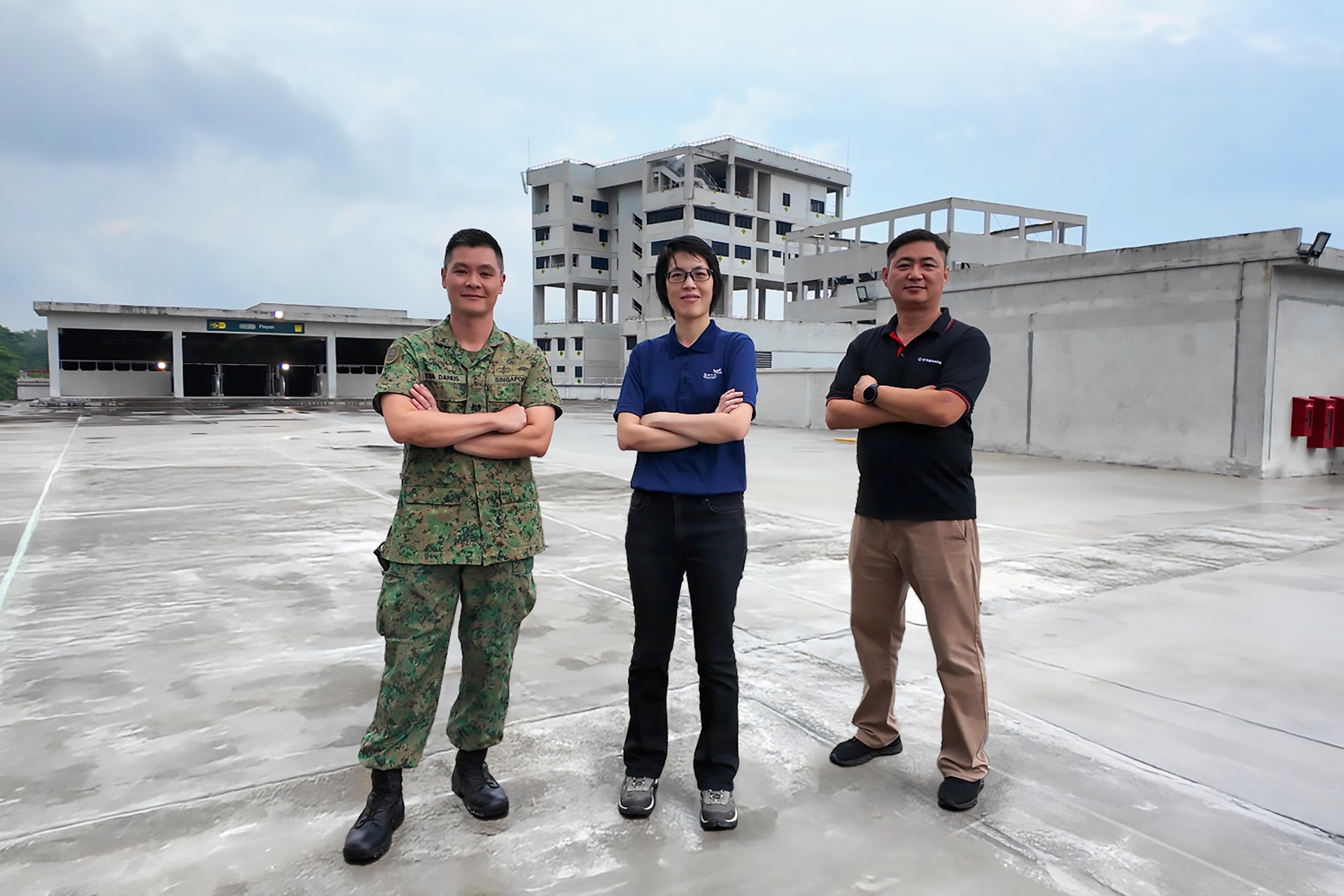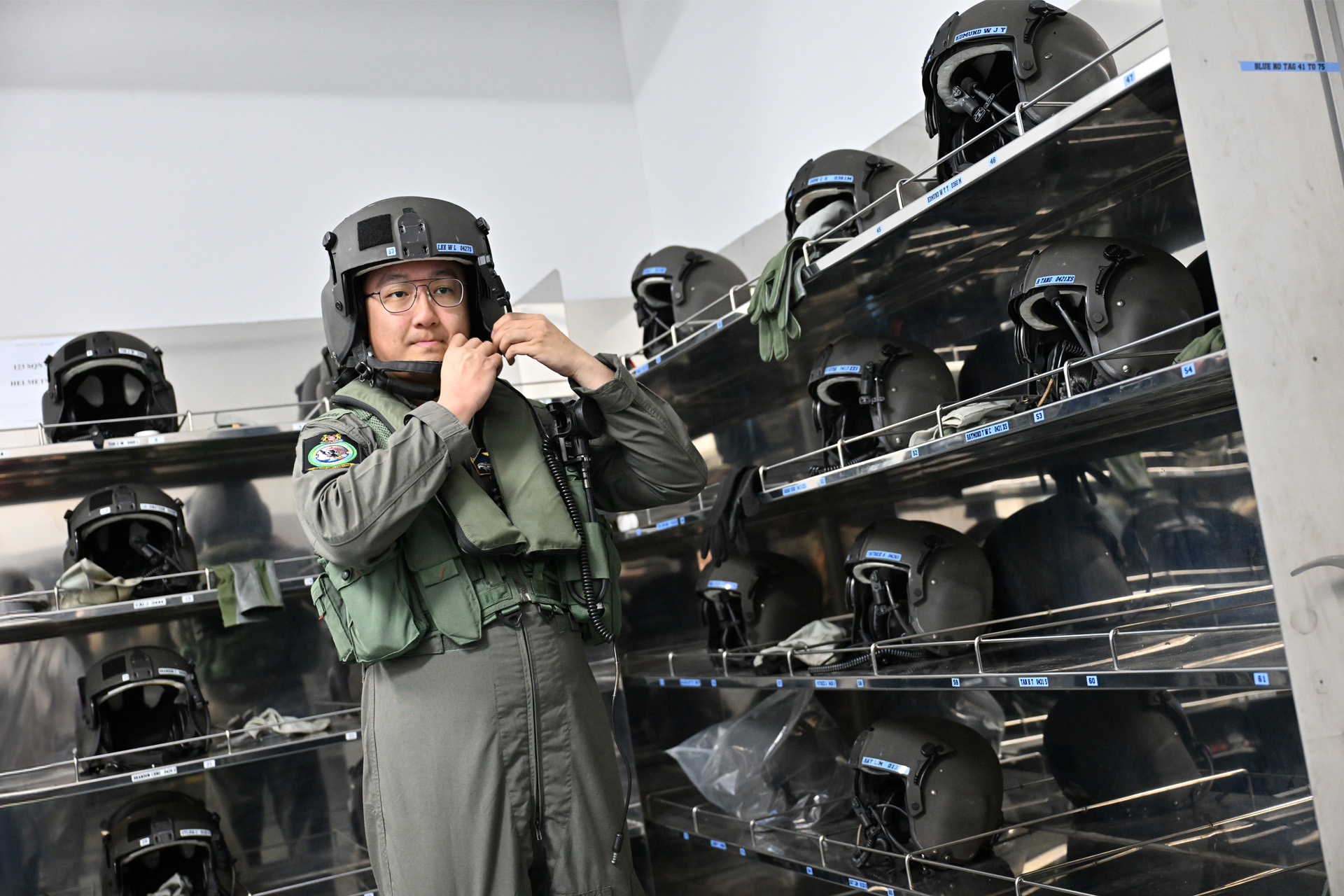TECHNOLOGY
Invisibility cloak
15 Jul 2016

Vehicles shrouded in Saab's Barracuda camouflage systems are near invisible and hard to detect, even with advanced sensors.
Since the birth of modern warfare with the wider use of gunpowder in the 18th Century, fighting men and women have had a need to conceal themselves from the enemy.
From the early days of adopting clothing hued in the closest shade to the environment and efforts to obscure warships during World War I in the late 1910s, to today's pixelised uniforms and high-tech multispectral camouflage, the art of staying hidden on the battlefield has evolved to be more of a science than an art.
With the advent of modern sensors such as thermal imagers and radar, it is not enough to stay out of sight. Modern camouflage systems have to defeat today's sophisticated detection technologies.
That is where Swedish defence-tech company Saab's Barracuda Mobile Camouflage System (MCS) steps up to provide multiple levels of concealment.
Mobile protection
Vehicles are most vulnerable when they are on the move. On the open road, there is little to no cover, and the dust clouds that follow are tell-tale signs of activity.
That is where the MCS excels. The MCS is a customisable shroud for military vehicles that masks not only the shape and form of the vehicle, but also reduces its overall signature while maintaining the full capability of the vehicle. Each panel of the MCS is interlocked with adjoining pieces and no vehicle modification is necessary to deploy the fully passive system.
Saab's ULCANS product can be made to blend into a variety of environments. Note the fine base scrim that works to eliminate snagging on vehicles' sharp corners while being deployed.
Hide and evade
Constructed of textile-like materials, the MCS thwarts modern detection technologies by dispersing, reducing and covering sources of heat. Even against sophisticated infrared and near-infrared sensors (night vision technologies in layman terms), the MCS is able to dim the sensors' sight.
It is also capable of evading detection by radar technologies. According to Saab, their MCS protects assets against all known sensors.
The MCS can be installed in minutes by crew and is designed to follow the contours of the vehicle. Cut-outs for vehicle lights and firing ports make sure that the vehicle's operability is not compromised (Like a mobile phone case that protects the phone while allowing all buttons to be accessed).
Cool options
Each MCS can be stacked with additional features as needed, such as a ballistic protection layer. This layer, made of aramid (a class of strong, heat-resistant synthetic fibres) and foam, improves the vehicle's ability to withstand blasts and shrapnel.
Another add-on is Saab's heat reduction CoolCam system. Designed to work optimally in warmer regions, the CoolCam system is a non-glossy material that can be applied with the MCS.
It works through a combination of insulation and reflection of the sun's rays to prevent the vehicle surface from heating up in daytime. Studies have shown that solar radiation can lead to an increase of 5 to 20 degrees Celsius in closed vehicle interiors.
When applied together with the MCS, the CoolCam material is expected to help vehicles save up to 25 percent of a vehicle's fuel consumption used for cooling.
To increase the vehicle's load-carrying abilities, Saab can manufacture each MCS with a series of straps to which bags and pouches of all sizes can be attached. While it is not the sexiest feature, soldiers will appreciate the additional space to stow more items such as rations and water.
Hiding in plain sight
The MCS is designed to fit within a suite of camouflage solutions from Saab. While the vehicle is in motion, it is protected by the MCS.
When static or taking up defensive positions, the vehicle can be further masked by Saab's Ultra Lightweight Camouflage Net System (ULCANS). Like the MCS, it hides vehicles from a broad range of sensors.
Deployment is made easy with a base scrim (a strong, coarse fabric) that eliminates snagging, allowing the net to be draped over the vehicle with ease. Additional contour disruptors are also available to further break the sharp lines of a vehicle.
According to Saab, its ULCANS solution is up to 50 percent lighter than previous generation camouflage screens. A number of military forces around the world, including the United States (US) Army and the British Army, use their systems.
In 2015, Saab announced that the British Army's Ajax armoured fighting vehicles would be fitted with the urban warfare MCS. General Dynamics UK, which produces the Ajax, was expected to make deliveries of the vehicles till 2022. In the same year, the US Army also purchased the Barracuda MCS, purportedly for their M1A2 Abrams main battle tanks.
Saab has been developing camouflage technologies for the past 50 years. Their know-how and products have been exported to over 50 countries and are used to protect not only vehicles but also military camps and other vital installations.
ALSO READ IN TECHNOLOGY

AI joins the fight in national cyber defence exercise
12 Nov 2025
AI and closer collaboration among agencies and industry are taking centre stage in this year’s Critical Infrastructure Defence Exercise (CIDeX).

They built this city
01 Oct 2025
Turning vision to reality: the team behind SAFTI City clinches the Defence Technology Prize 2025 Team (Engineering) Award!

Operating over skies & seas
22 Aug 2025
This gear is designed to help a Sensor Supervisor survive emergencies in the air and at sea.


